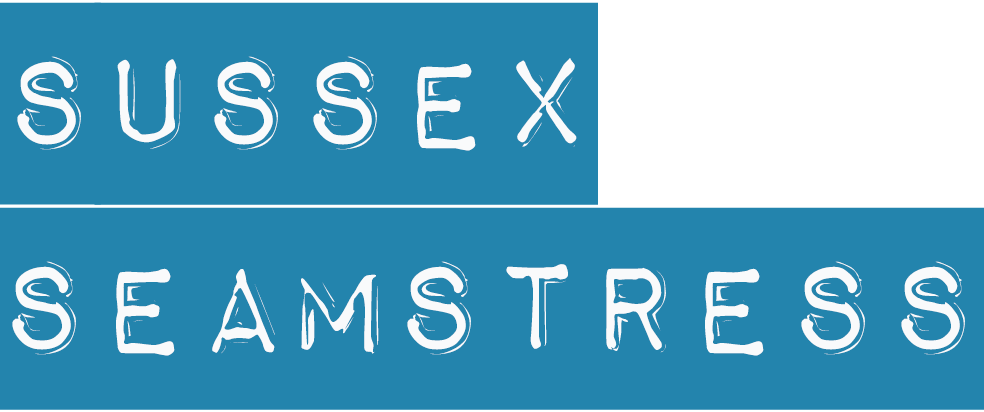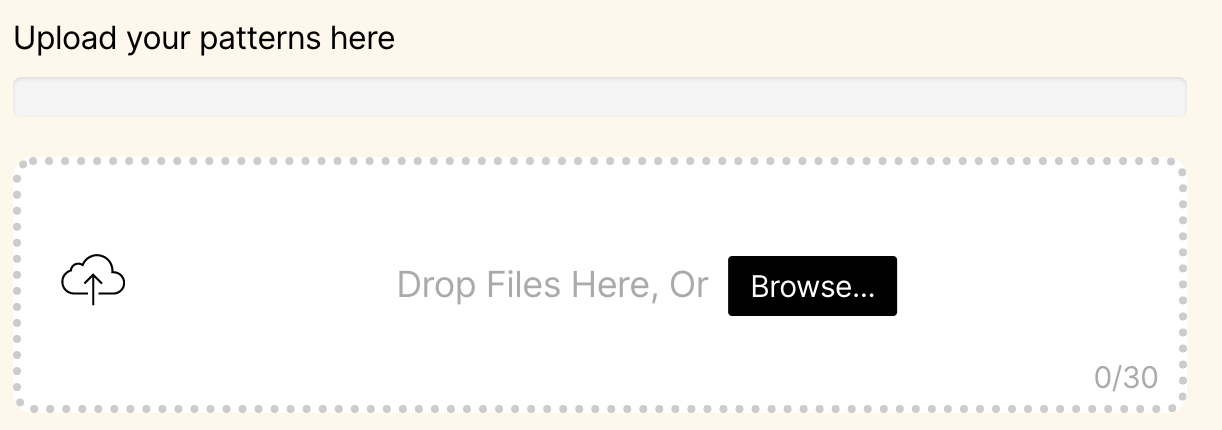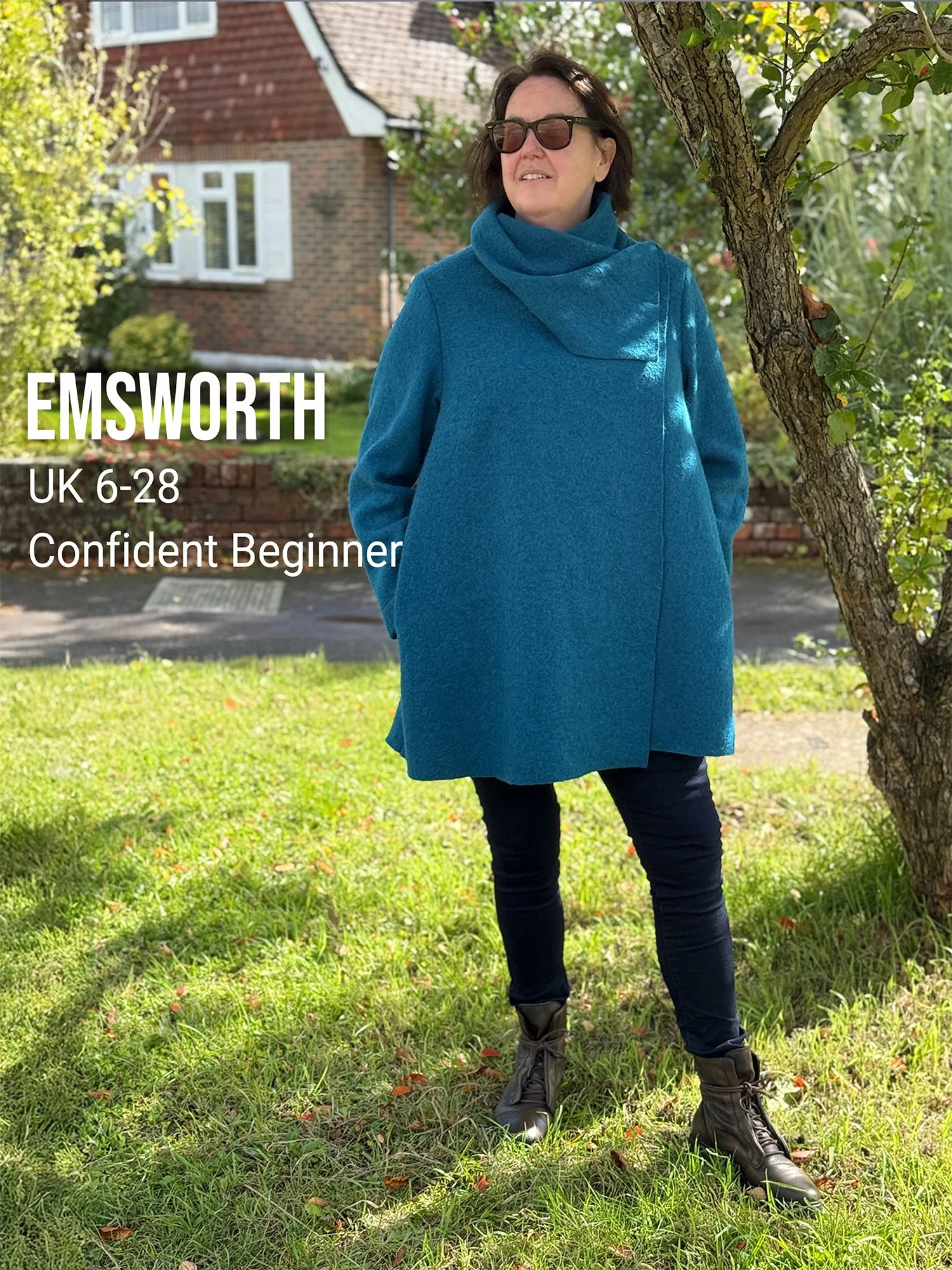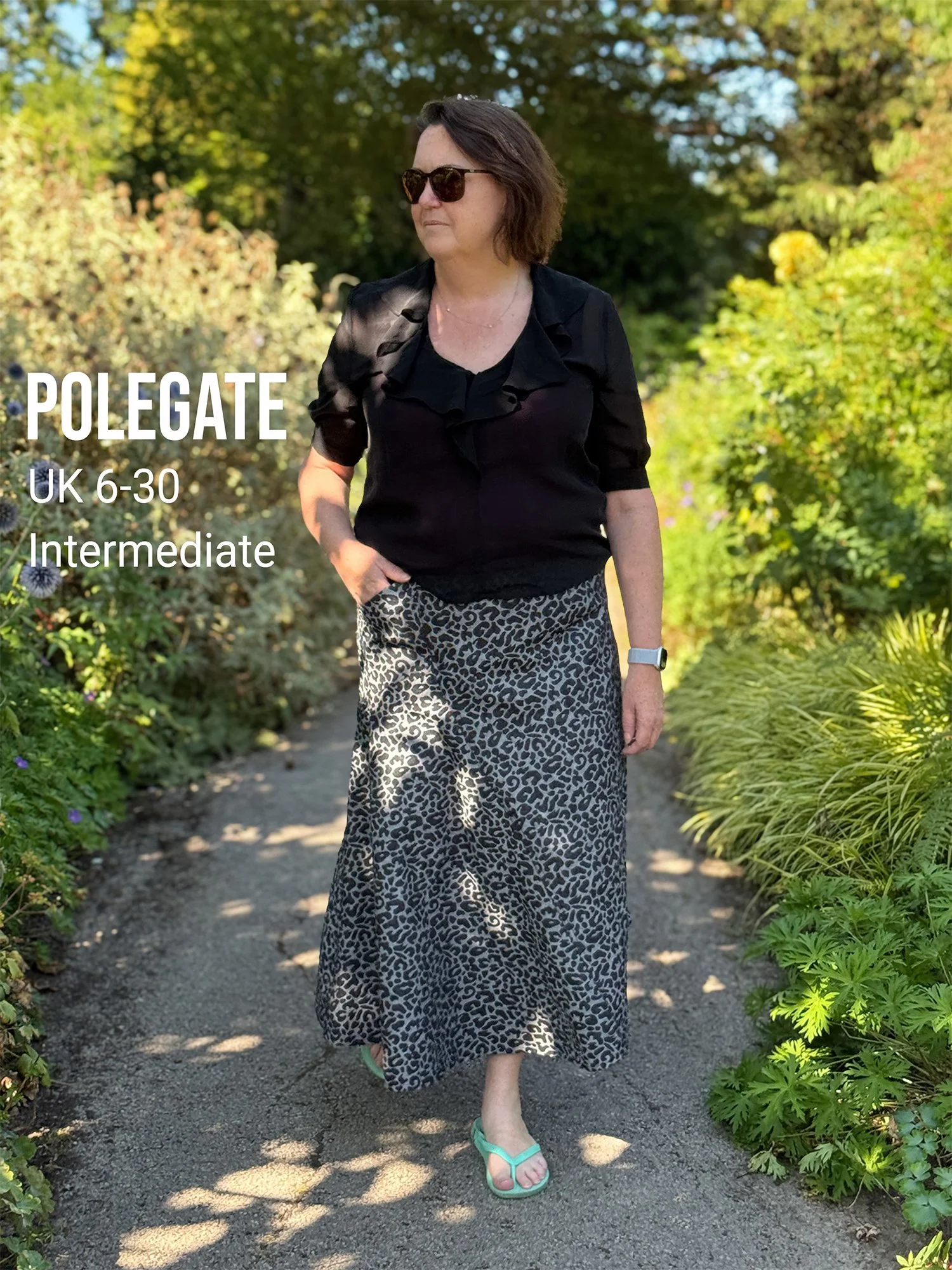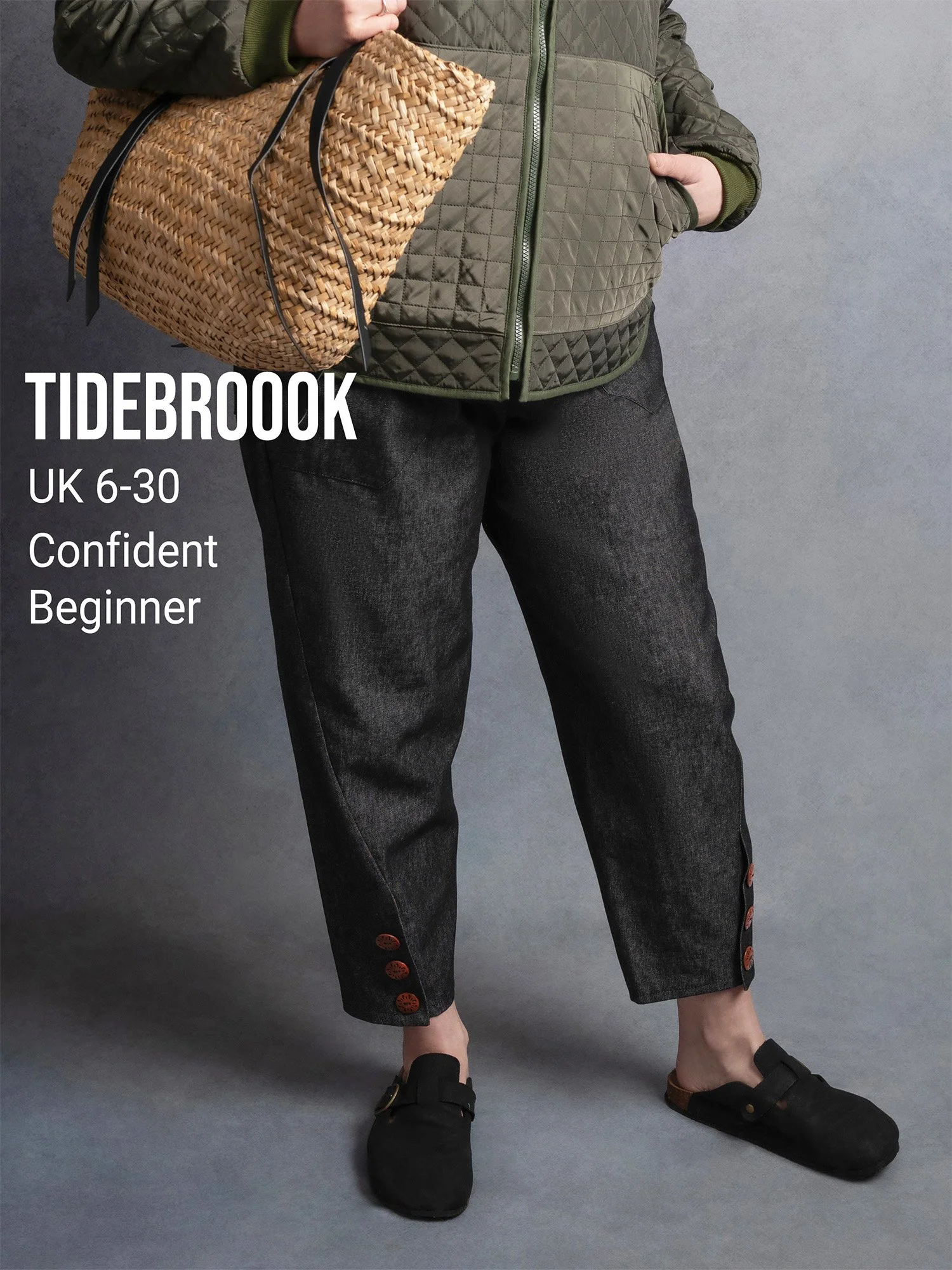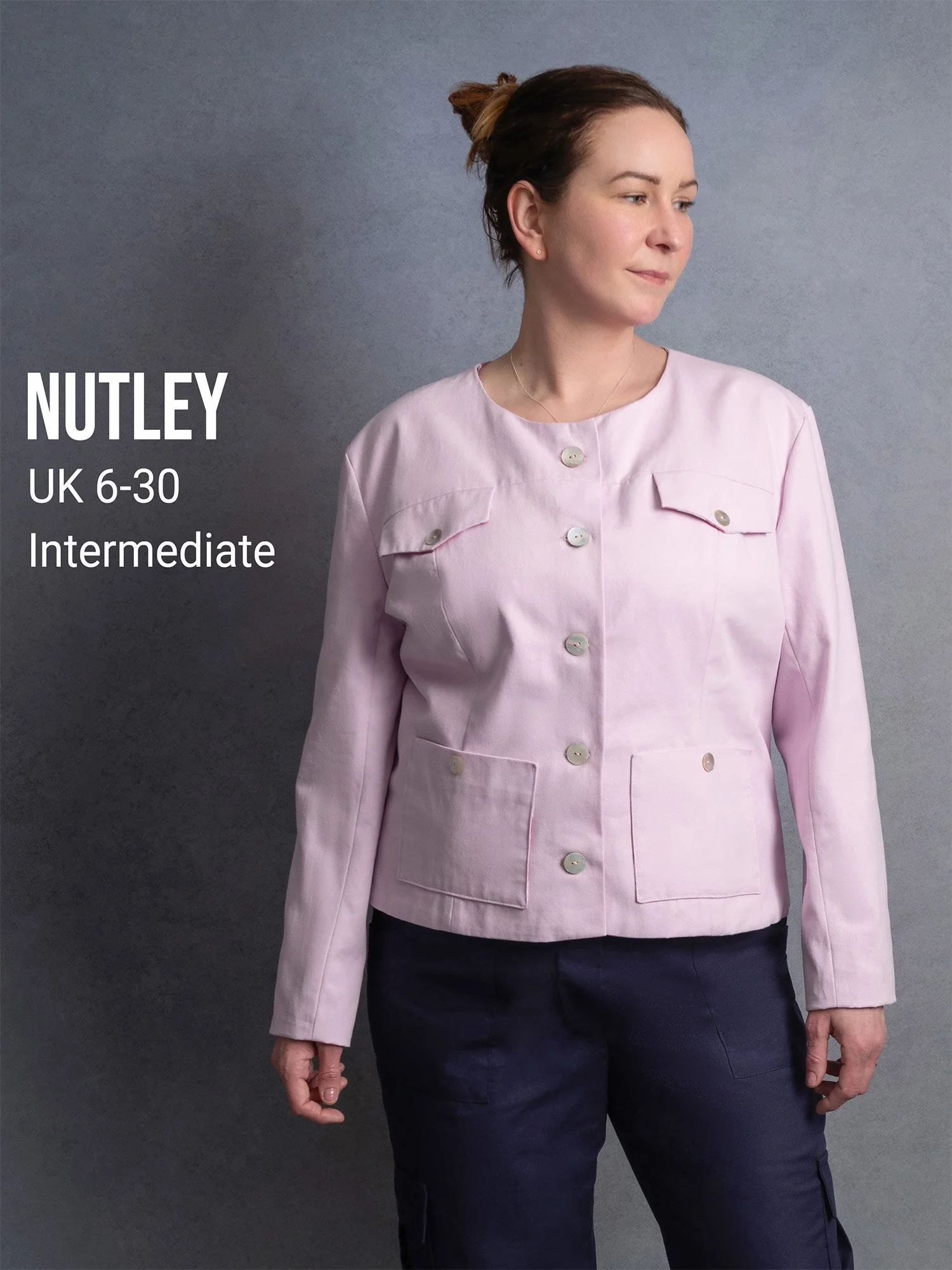Printing PDF Sewing Patterns Without A Printer
Introduction
First, a quick explanation if you’re not sure what a PDF sewing pattern actually is.
PDF stands for “Portable Document Format”, it’s a standardised file format for sharing electronic documents that works across almost all devices (with appropriate software), whether you have a PC, Mac, iPhone, iPad, Android Phone or Tablet or any other kind of modern computing device, you should be able to use a PDF document. It’s also a format that’s good for line drawings like sewing patterns, as it produces nice smooth lines when printed rather than ones that are pixelated, which you might get if using a standard image format like JPEG.
PDF sewing patterns then, are electronic files that contain a sewing pattern, that you then print, usually at home, on to A4 or Letter paper depending on where in the world you live (we’ll come on to this later!). You then need to tape all the pieces of paper together to make the entire pattern. This is one of the main drawbacks of PDF patterns. They may be cheaper than paper patterns, but they are not more convenient and there can be technical issues that arise during the home printing process that you need to be aware of (see our guides: How to Print and Assemble PDF Sewing Patterns, and How to Print PDF Sewing Patterns Correctly from iOS and Android we also have a Downloadable Guide to PDF Patterns).
An example of a PDF sewing pattern printed on a standard home printer, prior to taping it together.
There are many reasons why you might buy a PDF pattern rather than a paper one despite their drawbacks. Common ones are cost and immediacy. PDF patterns are generally cheaper than paper patterns as they don’t need to be printed, packaged and shipped to customers. You can also download them immediately, so they are great if you are in a hurry, or just overly excited to start!
But what if you don’t have a printer, or just don’t fancy taping together all those pieces of paper? What if you like a pattern but it’s only available as a PDF? Can you still use a PDF pattern?
The answer is yes, but as with everything PDF, it’s not an unqualified yes, and whether it is worth your while will depend on your particular circumstances. In most cases a paper pattern is a much simpler option, but there are cases where you might want to consider alternatives.
It’s worth pointing out that some people use special multi-layered PDF’s and an overhead projector to then trace out PDF patterns directly onto fabric. This is the ultimate “no printer” (or paper!) solution. But that’s a whole thing in itself, and beyond the scope of this article.
PDF Sewing PatternS - Paper Formats
Before we get on to how to print PDF’s without a printer, we need to take into account where you are the world and where you purchased your PDF pattern from. The reason is simple: differing paper formats in different locations.
If you live in the USA or Canada, or a few other parts of the world, you’ll be used to paper formats with names like Letter and Legal. If you live anywhere else in the world you’ll be more used to the international paper sizes starting with the letter “A”, such as A4, A0, A1 and so on.
To understand some of the issues you may encounter in printing PDF’s without a printer, its helpful to understand these different paper formats. However, if you already know how international & US paper sizes differ or you only buy PDF’s from your own country then by all means skip down to “Printing Large Format PDF Files”, otherwise let’s look at how paper formats differ…
International “A” Sized Paper
The international standard paper sizes work like a magic trick. Here’s a chart that lists some of the “A” series paper sizes.
International “A” sized paper size examples.
There are a few things that make these numbers magic. Let’s look at these sizes as a diagram, showing how the different paper sizes relate to each other.
An example of how the different “A” paper sizes relate to each other.
How neat is that? Every “A” paper size is exactly half the size of the next size up and double the size of the next size down. So one A0 splits exactly into two A1’s. One A1 splits exactly into two A2’s, and so on. And this magic trick works because all of the paper sizes have the same aspect ratio, i.e. the same “shape”, and that aspect ratio (the height divided by the width) is always 1.4. (Well, actually it’s 1.414213… which is the square root of 2). It’s this magic shape that allows all the paper sizes to fit in to each other so neatly. If they were a different shape, say square, then when you chop them in half their shape would change (a square chopped in half is not square).
Alright, it’s neat, but how is this useful? Well there are lots of benefits, for example any of the “A” paper sizes can be scaled to any of the other paper sizes - perfectly, with no cropping or funny borders, every sizes fits perfectly into every other size because they are all the same shape. This means you can scale down an A0 document onto a much smaller A4 piece of paper, or blow up an A4 to a much larger A0 size and it will fit perfectly. It also means that folding an “A” sized piece of paper in half results in a folded sheet that exactly matches the size of the next “A” sized paper down. So you can print an A4 instruction manual in “booklet” mode, which prints 2 pages next to each other on one sheet, and when folded the result will be a perfectly sized A5 booklet. (You can do this with the instruction manuals that come with Sussex Seamstress PDF patterns , see our blog post: How to Print PDF Sewing Pattern Instructions as Booklets).
Now if everyone in the world used this paper standard, I wouldn’t be telling you about it, since it wouldn’t cause any issues - everything would just work. But unfortunately, that’s not the case.
USA Paper Sizes
We live in the UK. As such we can’t really throw stones (or kilograms) when it comes to measurement standards. Although as a nation we are technically metric (and have been since 1965), we actually use a mish-mash of measures and will still regularly use feet, inches and pints when the fancy takes us. If you drive on British roads you’ll see speed limit signs reading “30”, but these mean 30 miles per hour, not kilometres per hour.
So we can’t really poke fun at anyone else’s measurement systems. But seriously USA (and Canada!) what the heck is going on with your paper sizes?
Examples of some US paper sizes.
The first thing to note is that US paper sizes are defined in inches. This is the first clue that these are an older standard. Whereas the international paper standards are based on some clever math that gives us that Russian Doll effect, US paper standards are based on… well, no one can quite remember. There are theories that it was something to do with old printing equipment, but no one is really sure.
Now, clearly these are not random sizes. We can see some common, repeated measurements, and there is even a “half letter” size, that sounds like it might be equivalent to the “A” standard trick. But it’s not, because the aspect ratios are all over the place. In other words, the paper sizes are almost all different shapes.
So what does all this have to do with PDF sewing patterns? The answer is that if you buy a PDF pattern on the internet, it’s not necessarily going to be in the same paper format that you commonly use in your country, and if you try to print one format of pattern on a different format of paper, things can go horribly wrong in terms of scale, which for sewing patterns is pretty crucial!
Many sewing pattern companies (including Sussex Seamstress) will provide PDF patterns in both A4 and US Letter formats, so you just use whichever format matches your location. But if you are going to print them without a home printer, then things can get a little trickier.
Printing Large Format PDF Files
What you may not realise is that many pattern companies supply their PDF’s not just in home printer format (A4, Letter), but also in large formats (like A0 - see above) that are designed to be sent to copy shops or online services that will print the patterns for you onto A0 (or often Copy Shop paper in the USA). At Sussex Seamstress we provide either A0 or A1 files depending on the size of the pattern. Often it’s a mix of the two since most patterns will span multiple sheets.
Let’s start with the simple case, where you’ve bought a PDF pattern that is in the correct paper format for your location. So for most of the world, that means A0.
Printing PDF Patterns At a Copy Shop
If you have a local copy shop, they will take your digital PDF files and print them onto the corresponding paper format. This is often a quick process that can be done while you wait. To give the copy shop your files you could copy them onto a USB Stick to take along (if you have such a thing and a device that supports them), or email them the files ahead of time and they will have the prints ready for you to collect later.
The advantage of using a copy shop, apart from supporting a local business, is that they can be a bit more flexible with what types of files you provide them and can offer you expert advice.
However, you may not have access to such a business in your area, or you may find it more convenient to use an online service.
Printing PDF Patterns Via An Online Service
A quick online search for sewing pattern printing services will provide you with a number of options. Here in the UK you’ll find companies like Fabulosew , CLC Printing, The Fold Line and Orbit Imaging, among many others, that will print PDF patterns for you and then mail them to you. Some, like Fabulosew, even offer a service to digitally stitch together A4 patterns if you don’t have an A0 version of them (though you may find that you’ll struggle to find printing services that will stitch together US Letter patterns in the UK and vice versa). Services like this will often provide a simple online drag & drop or file upload box that will allow you to upload your PDF files for printing; it will look something like this:
An example of an upload box for online PDF printing (this is just an image, don’t try to upload anything on this page!)
These services are really convenient, though there are some caveats. Some online printing services can be pretty fussy about what format they want their files in. For example, you may find you can only upload a single file, or that only A0 files are supported, or that multi-page patterns need to be in a single file, and so on.
The best advice is to check the requirements and shop around to find the service that best suits your needs and the files that you want to print. You’ll find different pattern companies provide their PDFs in different formats, e.g. a single file vs. multiple files, layered or not layered, all A0 or a mix of A0 and A1, and so on. So chose a service that can handle the files you have.
You’ll also find that services provide the printed pattern on different qualities & thicknesses of paper and some will also print the instruction manual for you, packaging it all up in an envelope, and so on. So shop around, but expect to pay more for a fancier service, and note that buying a PDF may be cheaper initially but if you’re sending it off to be printed, check that the cost of the PDF plus the cost of printing doesn’t exceed the cost of just buying and shipping a paper pattern in the first place, which is much more straightforward if that’s an option.
Printing PDF Patterns from a Different Country
As we mentioned earlier, if you are printing at home, you can simply chose the PDF files that match your local paper formats (be that A4 or US Letter), just check that the company you are buying from provides the pattern in the format you need. You should be fine. That’s not necessarily the case with larger formats.
Given that most of the world uses international standard “A” sizes, international PDF buying is generally only an issue when buying between anywhere in the world and the USA/Canada.
In these cases, you should either buy from companies that can provide you with the large PDF files in the format that you need; or find an online service that will print the “foreign” format.
There are online services in the US that will print onto A0 for example. This will be a lot less trouble than trying to get an A0 file printed on to smaller Copy Shop paper without messing up the scaling or cropping the pattern.
Summing Up
By far the easiest option for sewing patterns is to order a pre-printed paper pattern. If you are trying to keep costs down and have a home printer, then printing PDF versions at home is the best option, so long as you are prepared to tackle any technical issues and are happy doing the big PDF jigsaw (some people genuinely enjoy this part of the process).
However, if the pattern you want is only available as a PDF and you don’t own a printer, or if shipping a paper pattern would be prohibitively expensive when buying from aboard, then copy shops and online services are a good way of getting a full sized paper pattern from a PDF. Just beware those paper sizes and make sure the service can process the files that you have.
Our Dressmaking Patterns
Sussex Seamstress is an independent pattern maker, based in Sussex, UK. A selection of our patterns (sizes 6-30) are shown below, with paper patterns, pdf downloads, and full sewing kits available.
